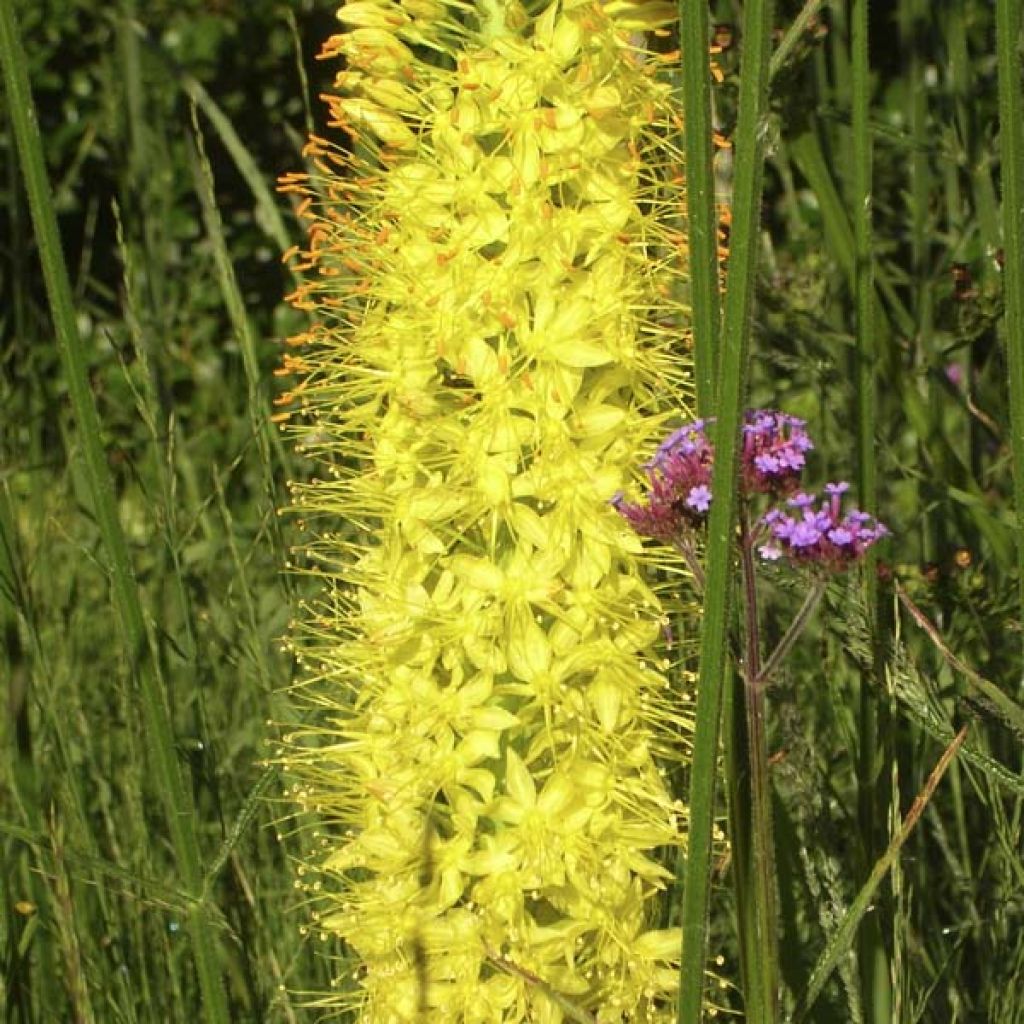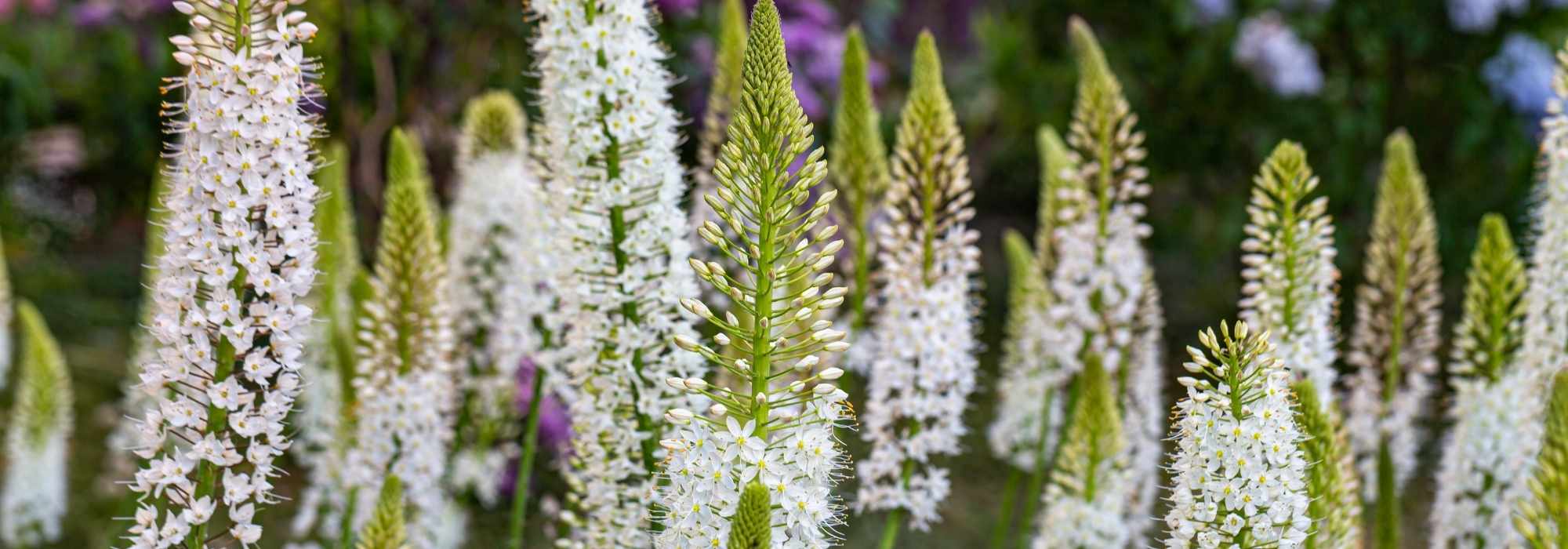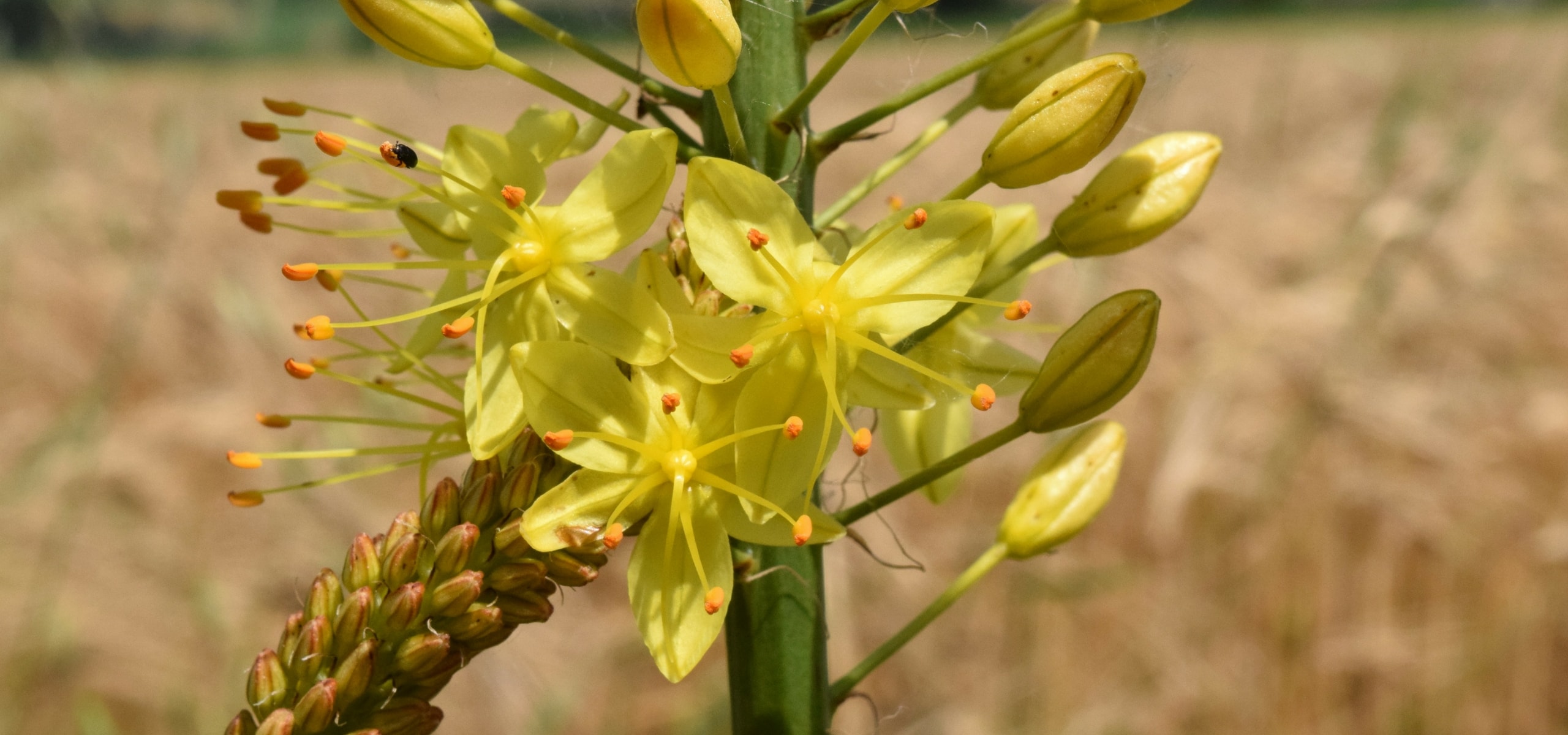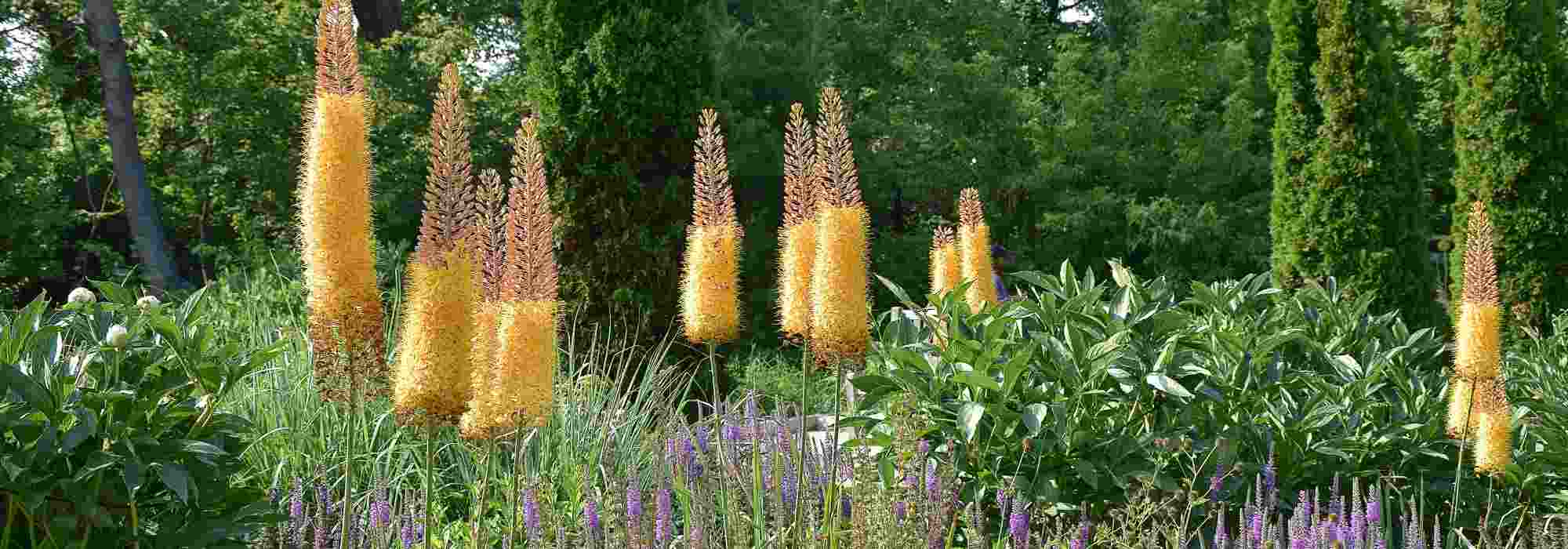

Eremurus x isabellinus Shelford' s Hybrids Tap Dance
Eremurus x isabellinus Shelford' s Hybrids Tap Dance
Eremurus x isabellinus Shelford' s Hybrids Tap Dance
Foxtail Lily, Desert Candle
Special offer!
Receive a €20 voucher for any order over €90 (excluding delivery costs, credit notes, and plastic-free options)!
1- Add your favorite plants to your cart.
2- Once you have reached €90, confirm your order (you can even choose the delivery date!).
3- As soon as your order is shipped, you will receive an email containing your voucher code, valid for 3 months (90 days).
Your voucher is unique and can only be used once, for any order with a minimum value of €20, excluding delivery costs.
Can be combined with other current offers, non-divisible and non-refundable.
This plant carries a 6 months recovery warranty
More information
We guarantee the quality of our plants for a full growing cycle, and will replace at our expense any plant that fails to recover under normal climatic and planting conditions.
Does this plant fit my garden?
Set up your Plantfit profile →
Description
The Eremurus 'Tap Dance' is part of a series of hybrid steppe lilies called Desert Candles, both highly ornamental and relatively easy to grow in European gardens: in late spring or early summer, its magnificent spikes rise, adorned with a multitude of small sun-yellow flowers with orange tips. This large bulbous perennial brings a touch of elegance and verticality to the back of flower beds, beautiful flowering pots, or stunning undulating alignments in the wind. The tall floral spikes are also very beautiful in bouquets.
The 'Tap Dance' steppe lily is a horticultural hybrid from the Shelford's Hybrids series, obtained by Sir Michael Foster in Great Shelford (Cambridge, England). All these plants are the result of cross-breeding between the Eremurus stenophyllus (= bungei), native to the steppes of Central Asia, and its cousin, the E. olgae, native to mountainous regions in northern Afghanistan and Iran. They belong to the asphodel family. The eremurus is a robust plant that can live for about fifteen years if well established, but it does not appreciate being disturbed. It has good resistance to dry cold, but it perishes in wet soil, from -5/-7°C (23/19.4°F).
The Eremurus 'Tap Dance' is a herbaceous plant with a fleshy root that resembles a spider or an octopus and measures about 20 cm (8in) in diameter. It is more of a tuberous stump composed of roots all around than a bulb. In spring, a large bud emerges from the ground, quickly forming a large rosette of leaves with a diameter of 60 cm (24in). These are ribbon-like leaves, 15 to 30 cm (6 to 12in) long, flexible, with rough edges, sometimes villous, and light green in colour. They dry out quite quickly during flowering, while the plant starts to enter a resting phase in a preferably dry soil. Flowering takes place from May to July depending on the region. From the stump, floral stems measuring 1.50m (5ft) to 2m (7ft) in height emerge, carrying floral spikes 20 to 50 cm (8 to 20in) long at their tips. Each spike is composed of a multitude of small star-shaped flowers, 1 to 2 cm (0 to 1in) in diameter, with sun-yellow petals and orange stamens. The flowers open successively from bottom to top, allowing the plant to have a flowering period of several weeks. The flowers, pollinated by insects, produce seeds that can be harvested and sown.
The Eremurus 'Tap Dance' is well suited for ornamental purposes in perennial flower beds that will hide its base, provided that neighboring plants do not suffocate it. Install it in small groups or in a line along a well-exposed wall, for example. In the garden, Eremurus pairs well with roses, garden irises, tall delphiniums, and botanical peonies. It also makes beautiful potted plants for the terrace, which can be easily protected from rain in winter. Create stunning bouquets by mixing eremurus with lilies or roses in matching colours.
Plant habit
Flowering
Foliage
Botanical data
Eremurus
x isabellinus Shelford' s Hybrids
Tap Dance
Liliaceae
Foxtail Lily, Desert Candle
Cultivar or hybrid
Planting and care
Plant the Eremurus 'Tap Dance' during the months of September-October in a very sunny location and sheltered from the wind to prevent the flower stalks from getting damaged. Place it in a rich, fertile, moist but well-drained soil. Limestone is not a problem. If it is not well-drained enough, you can mix sand with the soil at the time of planting. Well-drained soil allows for better root development and prevents them from rotting. Plant the stumps in autumn at a depth of 7 cm (3in), no more, as it needs to warm up quickly when the spring arrives. Protect the plant from winter moisture, which is fatal to it, by covering it with compost or straw without covering the collar. The young shoots should be protected with a dry mulch. The plant, which is well anchored in the soil, does not require staking. The Eremurus can be attacked by slugs and snails in spring. You can possibly provide the Eremurus with wood ash, which is rich in potash, to promote flowering.
In a pot, choose a large volume (at least 40 cm (16in) in diameter) to allow its large fleshy root to spread out.
The Eremurus needs dry cold in winter to develop well. In warm regions, we recommend planting the botanical species Eremus himalaicus instead.
Planting period
Intended location
Care
Planting & care advice
-
, onOrder confirmed
Reply from on Promesse de fleurs
Haven't found what you were looking for?
Hardiness is the lowest winter temperature a plant can endure without suffering serious damage or even dying. However, hardiness is affected by location (a sheltered area, such as a patio), protection (winter cover) and soil type (hardiness is improved by well-drained soil).

Photo Sharing Terms & Conditions
In order to encourage gardeners to interact and share their experiences, Promesse de fleurs offers various media enabling content to be uploaded onto its Site - in particular via the ‘Photo sharing’ module.
The User agrees to refrain from:
- Posting any content that is illegal, prejudicial, insulting, racist, inciteful to hatred, revisionist, contrary to public decency, that infringes on privacy or on the privacy rights of third parties, in particular the publicity rights of persons and goods, intellectual property rights, or the right to privacy.
- Submitting content on behalf of a third party;
- Impersonate the identity of a third party and/or publish any personal information about a third party;
In general, the User undertakes to refrain from any unethical behaviour.
All Content (in particular text, comments, files, images, photos, videos, creative works, etc.), which may be subject to property or intellectual property rights, image or other private rights, shall remain the property of the User, subject to the limited rights granted by the terms of the licence granted by Promesse de fleurs as stated below. Users are at liberty to publish or not to publish such Content on the Site, notably via the ‘Photo Sharing’ facility, and accept that this Content shall be made public and freely accessible, notably on the Internet.
Users further acknowledge, undertake to have ,and guarantee that they hold all necessary rights and permissions to publish such material on the Site, in particular with regard to the legislation in force pertaining to any privacy, property, intellectual property, image, or contractual rights, or rights of any other nature. By publishing such Content on the Site, Users acknowledge accepting full liability as publishers of the Content within the meaning of the law, and grant Promesse de fleurs, free of charge, an inclusive, worldwide licence for the said Content for the entire duration of its publication, including all reproduction, representation, up/downloading, displaying, performing, transmission, and storage rights.
Users also grant permission for their name to be linked to the Content and accept that this link may not always be made available.
By engaging in posting material, Users consent to their Content becoming automatically accessible on the Internet, in particular on other sites and/or blogs and/or web pages of the Promesse de fleurs site, including in particular social pages and the Promesse de fleurs catalogue.
Users may secure the removal of entrusted content free of charge by issuing a simple request via our contact form.
The flowering period indicated on our website applies to countries and regions located in USDA zone 8 (France, the United Kingdom, Ireland, the Netherlands, etc.)
It will vary according to where you live:
- In zones 9 to 10 (Italy, Spain, Greece, etc.), flowering will occur about 2 to 4 weeks earlier.
- In zones 6 to 7 (Germany, Poland, Slovenia, and lower mountainous regions), flowering will be delayed by 2 to 3 weeks.
- In zone 5 (Central Europe, Scandinavia), blooming will be delayed by 3 to 5 weeks.
In temperate climates, pruning of spring-flowering shrubs (forsythia, spireas, etc.) should be done just after flowering.
Pruning of summer-flowering shrubs (Indian Lilac, Perovskia, etc.) can be done in winter or spring.
In cold regions as well as with frost-sensitive plants, avoid pruning too early when severe frosts may still occur.
The planting period indicated on our website applies to countries and regions located in USDA zone 8 (France, United Kingdom, Ireland, Netherlands).
It will vary according to where you live:
- In Mediterranean zones (Marseille, Madrid, Milan, etc.), autumn and winter are the best planting periods.
- In continental zones (Strasbourg, Munich, Vienna, etc.), delay planting by 2 to 3 weeks in spring and bring it forward by 2 to 4 weeks in autumn.
- In mountainous regions (the Alps, Pyrenees, Carpathians, etc.), it is best to plant in late spring (May-June) or late summer (August-September).
The harvesting period indicated on our website applies to countries and regions in USDA zone 8 (France, England, Ireland, the Netherlands).
In colder areas (Scandinavia, Poland, Austria...) fruit and vegetable harvests are likely to be delayed by 3-4 weeks.
In warmer areas (Italy, Spain, Greece, etc.), harvesting will probably take place earlier, depending on weather conditions.
The sowing periods indicated on our website apply to countries and regions within USDA Zone 8 (France, UK, Ireland, Netherlands).
In colder areas (Scandinavia, Poland, Austria...), delay any outdoor sowing by 3-4 weeks, or sow under glass.
In warmer climes (Italy, Spain, Greece, etc.), bring outdoor sowing forward by a few weeks.









































